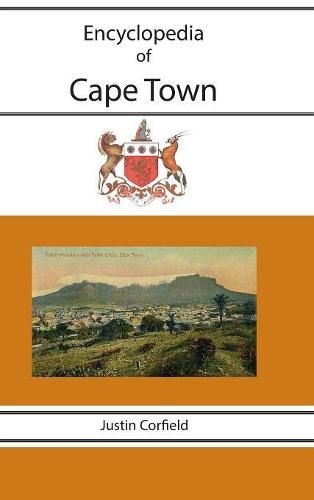Readings Newsletter
Become a Readings Member to make your shopping experience even easier.
Sign in or sign up for free!
You’re not far away from qualifying for FREE standard shipping within Australia
You’ve qualified for FREE standard shipping within Australia
The cart is loading…






This title is printed to order. This book may have been self-published. If so, we cannot guarantee the quality of the content. In the main most books will have gone through the editing process however some may not. We therefore suggest that you be aware of this before ordering this book. If in doubt check either the author or publisher’s details as we are unable to accept any returns unless they are faulty. Please contact us if you have any questions.
Cape Town is one of the capitals of South Africa and is the country’s oldest city, having been founded in 1652 by Jan van Riebeeck. In 1795 the British took the Cape, returning it to the Dutch eight years later, and then retaking it in 1806. It was formally ceded to the British in 1814 and developed quickly, becoming a municipality in 1839. By the twentieth century the city included in its population British, Afrikaans, Africans, Cape Malays, the Cape Coloureds, and a wide variety of other peoples, with books and novels highlighting the diversity of cultures. In 1910 with the formation of the Union of South Africa, Cape Town became the legislative capital as the location of the South African Parliament.
The city has rarely been out of the newspapers for long, and overshadowed by Table Mountain, it is a popular tourist resort. Many in the city took a stance against the introduction of Apartheid, with much suffering caused when large numbers of people were forced to move. Suburbs and communities were destroyed. It was the city where Christiaan Barnard performed the world’s first heart transplant in 1967, and Robben Island was where Nelson Mandela and so many other prisoners were held. In tribute to the part in the Anti-Apartheid struggle played by the people of Cape Town, Mandela chose the city to be the location of his first speech after being released from prison.
Cape Town has also a centre of sports and education. Since the end of Apartheid, the city has once again been able to celebrate the many cultures that have always been important in Cape Town. This book, the first encyclopedia on Cape Town, contains around 800 illustrations, many in colour, including a number of photographs never previously published.
$9.00 standard shipping within Australia
FREE standard shipping within Australia for orders over $100.00
Express & International shipping calculated at checkout
This title is printed to order. This book may have been self-published. If so, we cannot guarantee the quality of the content. In the main most books will have gone through the editing process however some may not. We therefore suggest that you be aware of this before ordering this book. If in doubt check either the author or publisher’s details as we are unable to accept any returns unless they are faulty. Please contact us if you have any questions.
Cape Town is one of the capitals of South Africa and is the country’s oldest city, having been founded in 1652 by Jan van Riebeeck. In 1795 the British took the Cape, returning it to the Dutch eight years later, and then retaking it in 1806. It was formally ceded to the British in 1814 and developed quickly, becoming a municipality in 1839. By the twentieth century the city included in its population British, Afrikaans, Africans, Cape Malays, the Cape Coloureds, and a wide variety of other peoples, with books and novels highlighting the diversity of cultures. In 1910 with the formation of the Union of South Africa, Cape Town became the legislative capital as the location of the South African Parliament.
The city has rarely been out of the newspapers for long, and overshadowed by Table Mountain, it is a popular tourist resort. Many in the city took a stance against the introduction of Apartheid, with much suffering caused when large numbers of people were forced to move. Suburbs and communities were destroyed. It was the city where Christiaan Barnard performed the world’s first heart transplant in 1967, and Robben Island was where Nelson Mandela and so many other prisoners were held. In tribute to the part in the Anti-Apartheid struggle played by the people of Cape Town, Mandela chose the city to be the location of his first speech after being released from prison.
Cape Town has also a centre of sports and education. Since the end of Apartheid, the city has once again been able to celebrate the many cultures that have always been important in Cape Town. This book, the first encyclopedia on Cape Town, contains around 800 illustrations, many in colour, including a number of photographs never previously published.